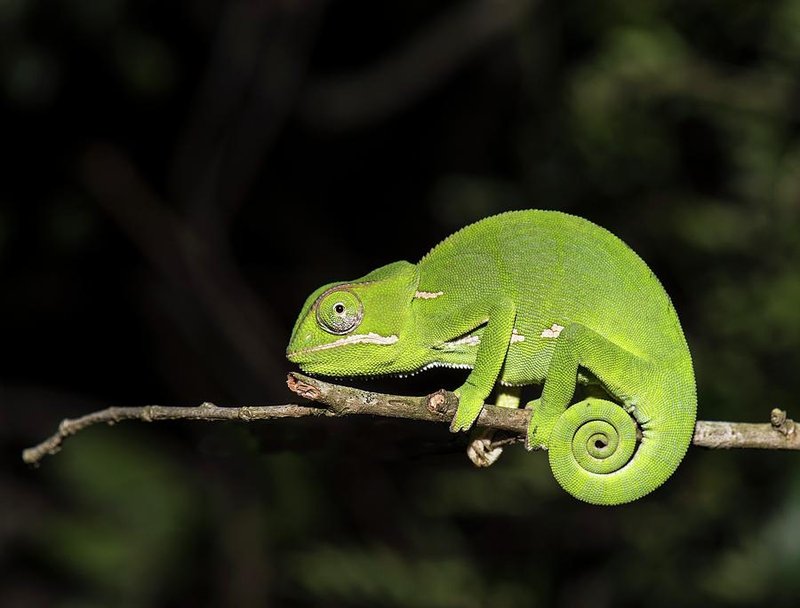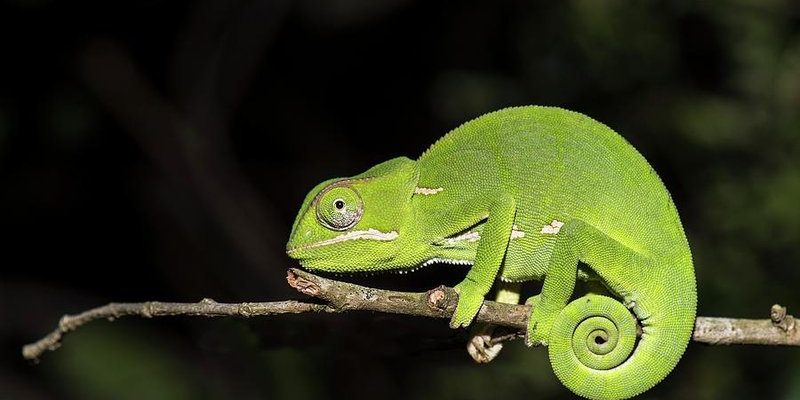
Imagine you’re at a lively party and you see some guests chatting cheerfully while others hang back, eyeing the scene. The flap-necked chameleon can be a bit like those guests. Its temperament varies based on its environment and situation. So, is this chameleon a delightful companion or a feisty little creature? Let’s dive into their behavior and discover what makes them tick.
Understanding Flap-Necked Chameleons
Flap-necked chameleons, or *Chamaeleo dilepis*, are native to Africa, particularly in areas with thick vegetation. They stand out due to their distinctive flap that hangs from their necks, which can be puffed out or drawn back depending on the situation. The colors can range from greens and browns to vibrant hues, perfect for blending in or showing off. Just think about how some people dress to impress at a party; the flap-neck works similarly for these chameleons to communicate.
One reason they are so intriguing is their diverse behaviors. You might see one basking in the sun, its body still and its colors muted. In contrast, when it feels threatened or excited, it can light up in a flash, showcasing its brilliant colors. This ability is not just for camouflage; it’s also part of their communication method, signaling to others whether they’re relaxed or ready for a showdown.
Behavioral Traits: Aggressive or Friendly?
When it comes to the question of aggression, it really depends on the context. Flap-necked chameleons can be territorial, especially males during mating season. If they feel their territory is being encroached upon, they might display aggressive behaviors like puffing out their flaps, hissing, or adopting a threatening posture. It’s their way of saying, “Back off! This is my space.”
On the other hand, if they’re left alone in a safe environment, flap-necked chameleons can be quite calm. They’re not naturally aggressive toward humans or pets. Instead, they tend to be more curious, observing their surroundings and engaging in gentle interactions. So, while they have a feisty side, they’re not inherently aggressive toward people.
What Triggers Aggression?
You might be wondering what causes these chameleons to act aggressively. One common trigger is feeling threatened. If a flap-necked chameleon feels cornered or insecure, it might react defensively. This is important to remember if you’re considering keeping one as a pet. Creating a stress-free environment for them is essential.
Other factors can include competition for food or mating. In the wild, male flap-necked chameleons may compete for the attention of females, displaying their vibrant colors and puffing out their flaps. This competitive behavior can lead to aggressive encounters. Ensuring your pet has enough space and resources can significantly reduce aggressive displays.
How to Keep Your Flap-Necked Chameleon Happy
If you decide to welcome a flap-necked chameleon into your home, there are a few things you can do to create a friendly environment. Start by providing ample space. A larger enclosure can help reduce territorial disputes and provide your chameleon with room to explore.
Consider including various branches and foliage, allowing them to feel secure while basking and hiding. Naturalistic environments make for happier chameleons. Plus, they love climbing and exploring, helping them stay active and engaged.
Feeding is another critical aspect. A balanced diet of live insects and occasional fruits can keep your flap-necked chameleon healthy and content. An unhealthy or insufficient diet can lead to stress and may cause aggression, so always ensure they get the proper nutrition.
Signs of Stress in Chameleons
Recognizing the signs that your flap-necked chameleon is stressed can help you address any issues quickly. Look for behaviors like rapid color changes, hiding more than usual, or unusual aggression toward you or their environment.
If they seem less active or stop eating, it might be time to reassess their habitat. A stressed chameleon may also display lethargy or decreased appetite, both of which can indicate discomfort.
When to Seek Help
If your flap-necked chameleon continues to show signs of aggression or stress despite your best efforts, it’s essential to seek help. Consulting with a veterinarian who specializes in reptiles can provide valuable insights. They can help you identify any underlying health issues or offer advice on improving your chameleon’s habitat.
In some cases, behavioral training techniques can also help establish trust between you and your pet. It’s all about understanding their needs and encouraging a friendly bond.
In the end, the flap-necked chameleon can be both friendly and aggressive, depending on its circumstances. With the right environment and care, these fascinating reptiles can be charming companions rather than feisty foes. Remember to provide a comfortable space, keep them well-fed, and watch for signs of stress or aggression.
Ultimately, understanding your flap-necked chameleon’s behavior is crucial for nurturing a happy, friendly relationship. Whether they’re basking in the sun or puffing up their flaps, these chameleons have much to offer those willing to learn about their intricate worlds.

